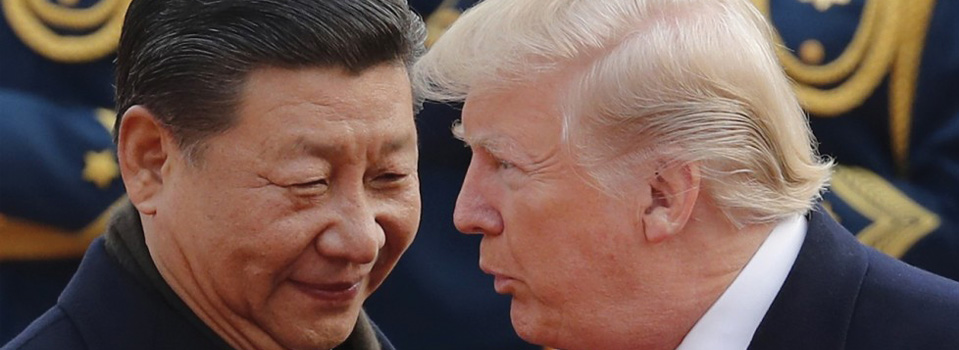Derwin Pereira says as necessary as security is, it is economic integration that truly fosters peace and prosperity in the 21st century
It is a truism that economic links among nations enhance their security by giving them a stake in one another’s well-being. It is equally true that international trade requires a stable strategic framework in which to function. The challenge for the United States and China today is to keep both principles in mind as they reset their relations.
Unfortunately, that was not the impression created during the recent summits of the Asia-Pacific Economic Cooperation forum and the Association of Southeast Asian Nations. The general direction set there diverged from the nexus of trade and security, a principle that has served Asia well.
Instead, military strategy overshadowed the economic momentum which should bring Washington and Beijing closer, to the benefit of small and medium-sized Asian nations that depend on the buoyancy of Sino-American relations.
Thus, the Apec meeting in Manila was foregrounded by American gestures of military support for Southeast Asian countries in their maritime dispute with China. The point was not lost on Beijing, which watched haplessly as President Barack Obama delivered reassurances of material support in the Philippines, a claimant in the South China Sea dispute whose relations with China are under strain.
China’s reaction to America’s overtures to Southeast Asian nations was a studied response in stubbornness. Mixing defiance and disdain, Beijing made it clear that it would not be swayed from treating the South China Sea issue as one of implacable Chinese sovereignty.
The mood created in Manila also reverberated at the Asean summit in Kuala Lumpur that followed. Several leaders at the gathering, including Prime Minister Shinzo Abe of Japan, an America ally, raised concerns about the South China Sea against the background of China’s land reclamation activities there.
Certainly, China’s military assertiveness cannot be denied in the South China Sea, a key international shipping route. To the extent that its muscle-flexing potentially threatens freedom of navigation, it is China that is guilty of breaching the trade-as-security nexus.
However, the US and its allies and partners in Southeast Asia should not escalate the military stakes and precipitate outcomes that would reduce China’s stake in the economic order arising in the Asia-Pacific. What will matter is a judicious balance between economic objectives and the strategic framework needed to achieve and protect them.
This is where several regional free-trade initiatives on offer come into promising play. In spite of their differing provenance, their intention is to increase the economic space of their members. Unlike exclusive security blocs – such as the West’s North Atlantic Treaty Organisation and the erstwhile Warsaw Pact that tied the Soviet Union to its East European satellites – integrative economic organisations in the post-cold war world underline the possibility of achieving security through greater trade and financial liberalisation.
Today, there are the US-centric Apec and Trans-Pacific Partnership (TPP). There are also the China-backed Regional Comprehensive Economic Partnership and the Asian Infrastructure Investment Bank (AIIB). Yet, it is possible for countries to belong to both economic camps. Several of them – including Australia, Japan, Singapore and Vietnam – are present in both the TPP and the regional economic partnership. There is no contradiction because, as Singapore argues, both pacts are possible pathways to a free trade area of the Asia-Pacific and a contribution to building momentum for global trade reform. As mutually-supportive parallel tracks for regional integration, they uphold overlapping economic interests.
Indeed, even India, a potential strategic challenger to China, is a member of the AIIB. Here, again, the economic advantages of belonging to one of the most adventurous financial initiatives in Asia rightly take precedence over the possibility of acute strategic rivalry between the two Asian giants.
Asean’s own economic community, which is coming to fruition, is yet another attempt to leverage the potential of economic cooperation, irrespective of the degree to which its individual members tilt towards China or the US.
These economic institutions deserve to be given a chance to succeed, without their rationale being undercut by strategic rivalry. Trade has its winners and losers, but it is not a zero-sum game, unlike war.
As the underpinning structures of the Asia-Pacific continue to evolve, it would be good to keep in mind the lessons of contemporary history. The US triumphed over the Soviet Union in the cold war because it could combine its economic and military power in a way that the communist behemoth could not.
Today, American military power remains predominant globally, but it has its limitations, as the wars in the Middle East show. Instead, it is American economic power that gives it substantial leverage and credibility with countries such as China and India. China and India, for their part, owe much of their international clout to the fact that they have been able to stay out of wars and concentrate on building 21st-century economies.
Essentially, trading states are better positioned for success than warring states. It would be naive to believe that trading states will not use their economic capabilities to augment their military ability. They will. Thus, China and India are doing no more than what previous rising powers, notably Britain and the US, did. However, economic integration – resulting in a marked degree of dependence on globalisation – does exercise a restraining influence on the war-making intentions of states.
Asia needs more trade, both for itself and to prevent regression to the terrible habits of the past that led to the second world war.


